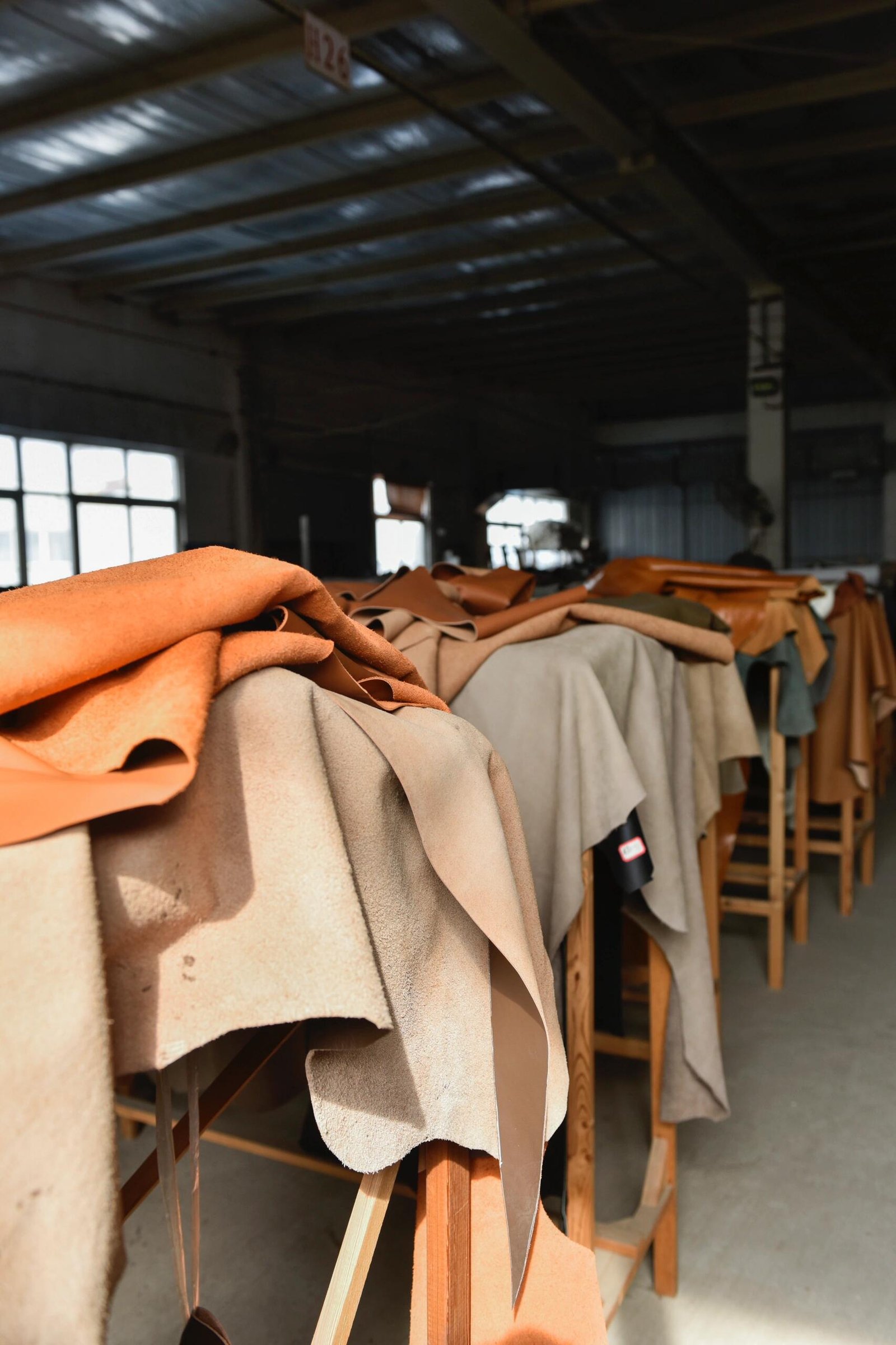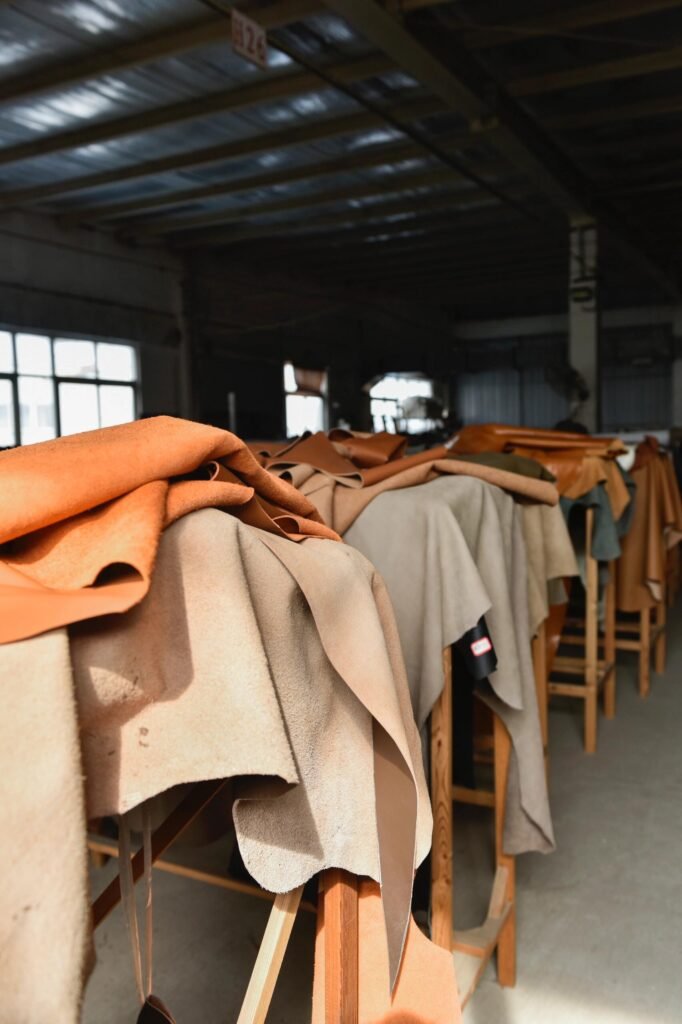Leather is one of those timeless materials that has been around for centuries, and for good reason. Whether it’s in furniture, fashion, or automotive interiors, leather brings a unique blend of durability, comfort, and style that’s hard to beat. But not all leather is the same—there’s a lot to know about the different types, how it’s made, and how to care for it. In this guide, we’ll break down everything you need to know about leather, so you can make informed decisions whether you’re buying a leather couch, jacket, or car seat.
Types of Leather
Leather generally falls into two main categories: natural leather and synthetic leather. Each has its own set of characteristics, pros, and cons.
Natural Leather
Natural leather comes from animal hides that go through a process called tanning. It’s known for its premium feel, durability, and one-of-a-kind texture. There are several types of natural leather, each varying in quality.
- Full-Grain Leather
This is the crème de la crème of leather. Full-grain leather is the most durable and develops a rich patina over time. It keeps the natural grain of the hide, including the pores and scars, which gives it that authentic look. You’ll often find it in high-end furniture, bags, and boots. The more you use it, the better it looks.
- Top-Grain Leather
Top-grain leather is a step down from full-grain but still very high quality. It’s sanded down to remove imperfections, giving it a smoother, more uniform appearance. It’s durable and breathable, making it great for furniture and fashion items. However, it doesn’t develop the same patina as full-grain leather.
- Split Leather
This comes from the lower layers of the hide, making it softer but less durable than full-grain or top-grain leather. To make it stronger, it’s often coated or embossed with textures. Split leather is more affordable and usually found in mid-range products.
- Suede
A type of split leather, suede is sanded on the underside to give it a soft, velvety texture. While it looks and feels luxurious, suede is more delicate and requires extra care to keep it looking good.
Synthetic Leather
Synthetic leather is man-made and designed to mimic the look and feel of natural leather, but it comes with a lower price tag. It’s popular for budget-friendly products and can be produced in large quantities.
- PU Leather (Polyurethane Leather)
PU leather is a popular alternative to natural leather. It’s soft, easy to clean, and often used in furniture, shoes, and clothing. While it’s less expensive, it doesn’t have the same durability or breathability as real leather.
- PVC Leather (Polyvinyl Chloride Leather)
PVC leather is stiffer than PU leather but more water-resistant and durable. It’s often used in outdoor furniture and more affordable fashion items. The texture can be modified to imitate different types of natural leather.
How Leather Is Made
Turning animal hides into usable leather involves several steps. The quality of the final product depends heavily on how the leather is processed.
- Preparation
The raw hides are cleaned, de-haired, and degreased to remove impurities. This prepares the hide for the next stage.
- Tanning
Tanning is what turns raw animal hides into durable, long-lasting leather. There are two main tanning methods: vegetable tanning and chrome tanning.- Vegetable tanning uses natural plant tannins and produces a firm, eco-friendly leather.
- Chrome tanning uses chromium salts and results in a softer, more flexible leather that’s also water-resistant.
- Dyeing and Finishing
Once tanned, the leather is dyed to achieve its final color. It’s then polished or coated to make it smooth, shiny, or textured, depending on the desired look.
- Waxing and Polishing
Some leathers, like full-grain leather, are treated with wax and polished to give them extra shine and a protective layer.
Key Characteristics of Leather
Not all leather is created equal, and understanding its key characteristics can help you choose the best type for your needs.
- Durability: Leather is known for being tough and long-lasting, especially full-grain leather, which can withstand years of use without falling apart.
- Breathability: Natural leather has pores, which makes it breathable and comfortable to sit on or wear. It can regulate moisture and temperature, which is why leather jackets and shoes feel comfortable in different climates.
- Softness and Flexibility: High-quality leather is soft and flexible, molding to your body over time while still holding its shape.
- Unique Look: One of the best things about leather is that no two pieces are exactly the same. The natural grain, scars, and imperfections give each item a unique, authentic look.
- Workability: Leather is easy to cut, shape, and mold, which makes it great for custom furniture or fashion items.
Where Leather Is Used
Leather’s versatility makes it a go-to material for many industries. Here are some of the most common uses:
- Furniture: Leather sofas, chairs, and headboards are often made from full-grain or top-grain leather for a luxurious feel. Synthetic leather is also popular in more affordable furniture.
- Fashion: Leather jackets, shoes, belts, and bags are iconic pieces in the fashion world. Genuine leather, especially in high-end items, adds a sense of luxury and durability.
- Automotive: Leather seats, steering wheels, and trim in cars are popular in higher-end models. Leather in cars needs to be heat-resistant, durable, and easy to clean.
- Other Uses: Leather is also used in accessories, like wallets and watch straps, as well as sporting equipment and decorative items.
Leather Care Tips
Leather is durable, but it still needs proper care to keep it looking good for years. Here’s how to take care of it:
- Clean Regularly: Wipe leather down with a soft, damp cloth to remove dirt and dust. Avoid harsh chemical cleaners, which can damage the surface.
- Moisturize: Use leather conditioner every few months to keep it soft and prevent cracking.
- Keep It Dry: Avoid exposing leather to too much water or direct sunlight, as both can cause damage over time.
- Store Properly: If you’re storing leather items, keep them in a dust bag or cover them to prevent scratches and dirt buildup.
Final Thoughts
Leather remains one of the most versatile and desirable materials out there, whether it’s for luxury furniture, fashionable accessories, or high-end car interiors. It’s durable, beautiful, and only gets better with age. By understanding the different types of leather and how to care for it, you can ensure you’re making smart purchases and getting the most out of your leather goods.



